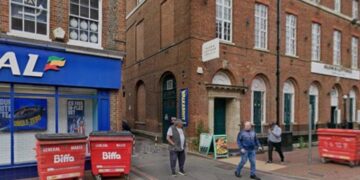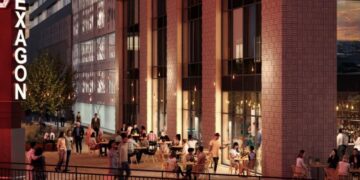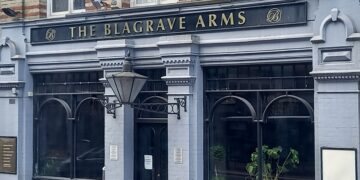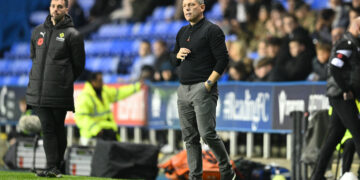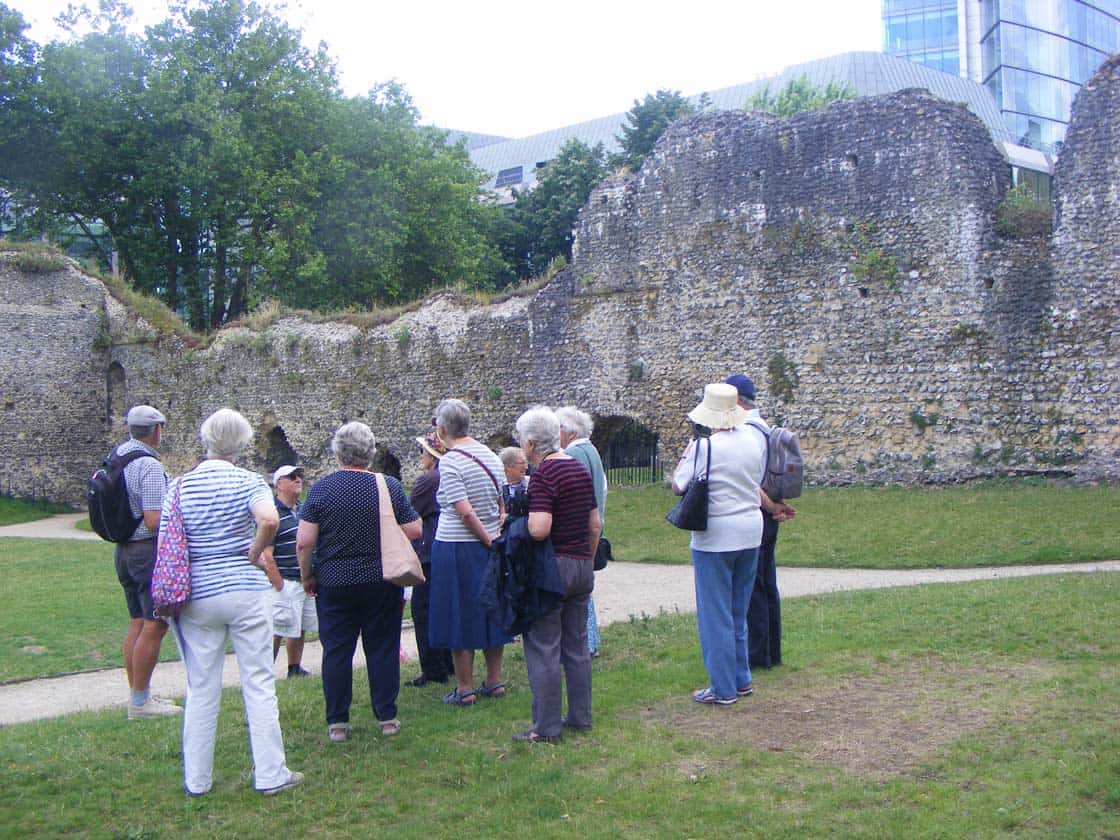Members of Wargrave Local History Society enjoyed a guided walk around Reading’s Abbey Quarter on a sunny August afternoon.
The abbey was founded 900 years ago, in 1121, by Henry I, and the parish of Wargrave was part of its endowment.
Our guide, John Painter of the Friends of Reading Abbey, began by St Laurence’s church at the east end of Friar Street.
The church would be visited by pilgrims visiting the abbey, before they entered through the west gate which stood on the south side of the church.
Previously, Reading had been centred on the Minster church of St Mary’s, but the monks developed the area between there and the abbey site, including the market place.
After the dissolution of the monasteries, St Laurence’s was rebuilt, and became a church for the townspeople.
The rest of the abbey site is the area east of here, bounded to the north and east by Forbury Road, and to the south by the River Kennet.
Following the dissolution of the monasteries by Henry VIII, most such places were destroyed, but the king wished to retain the site as a royal palace, from which he could enjoy hunting.
Behind the Town Hall, stands another ancient building, which had been the hospitium for the abbey, where hospitality was offered to visitors to the abbey, lodging in the large dormitory there. In later time, this became Reading Grammar School, and in due course it also served as the Guildhall for the town.
Beyond here is the open area of Forbury Gardens, which was used in medieval times for events such as fairs which the public could attend – only monks and lay brothers being allowed into the monastery itself.
Pilgrims would come here to see the religious relic known as the Hand of St James.
To the south of here are the remains of the south transept of the abbey church, its chapter house and dormitory, leading down to the river. The church was large – and its chapter house is thought to be the largest ever built in this country. The southern boundary is the River Kennet, where the path leads to the Holy Brook. This runs under the town centre in a culvert, and had powered the Abbey Mills, which survived well into the 20th century.
Turning from here back towards the Forbury Gardens the group reached the Abbey Gateway, which was restored in the Victorian era by the architect Sir George Gilbert Scott. This included enclosing downpipes within the structure for a neatness, but unfortunately being hidden away any leakage was not discovered for very many years, leading to extensive and expensive restoration work earlier this century.
In more recent times, the walls were found to need some remedial work, as the structure had become unsafe. With the aid of a Heritage Lottery Fund grant, Reading Borough Council, along with the Friends of Reading Abbey have been able to restore the site, add information panels, and make it available for people to discover again.
Share news from your club, group or society
If you are in a WI, Mothers’ Union, a friendship group or an action group then send us a report of your meetings and we’ll print them here!
Share your reports by emailing news@wokingham.today



